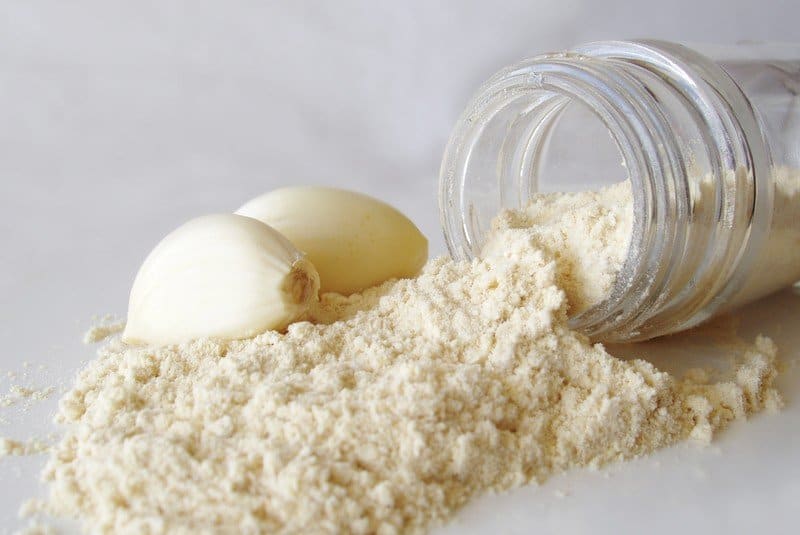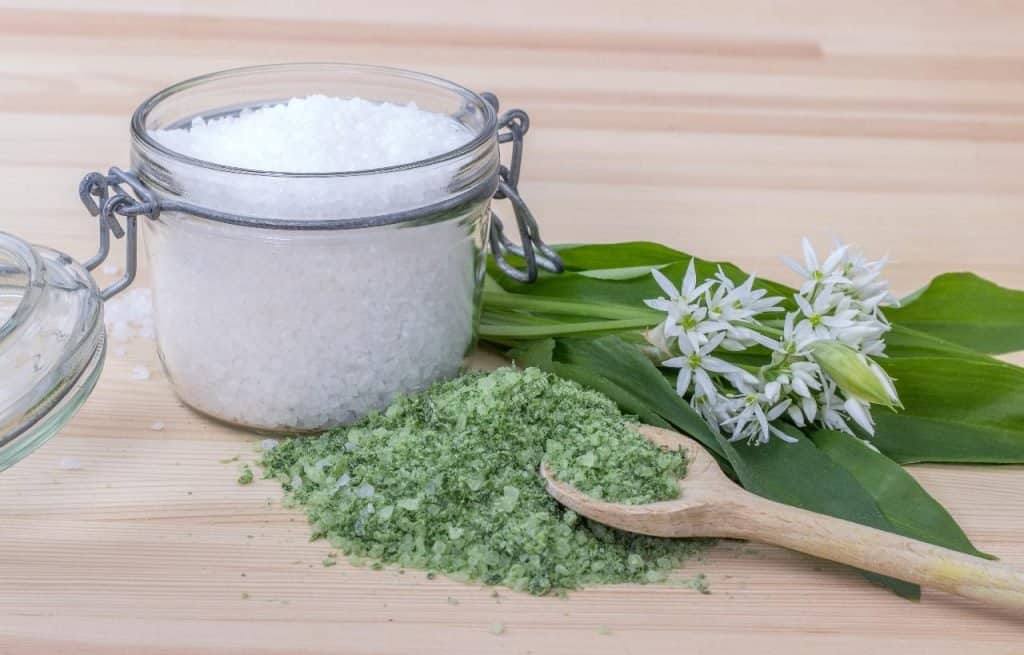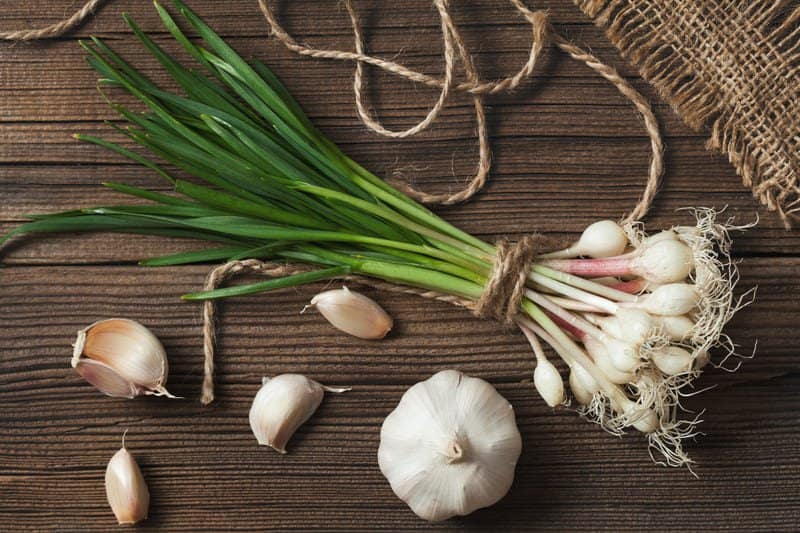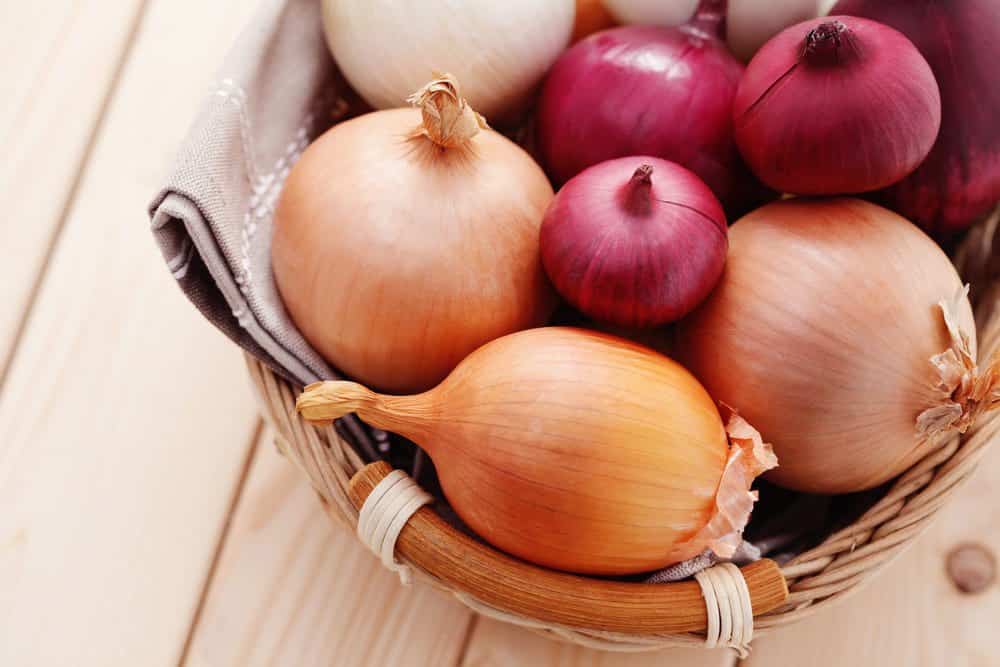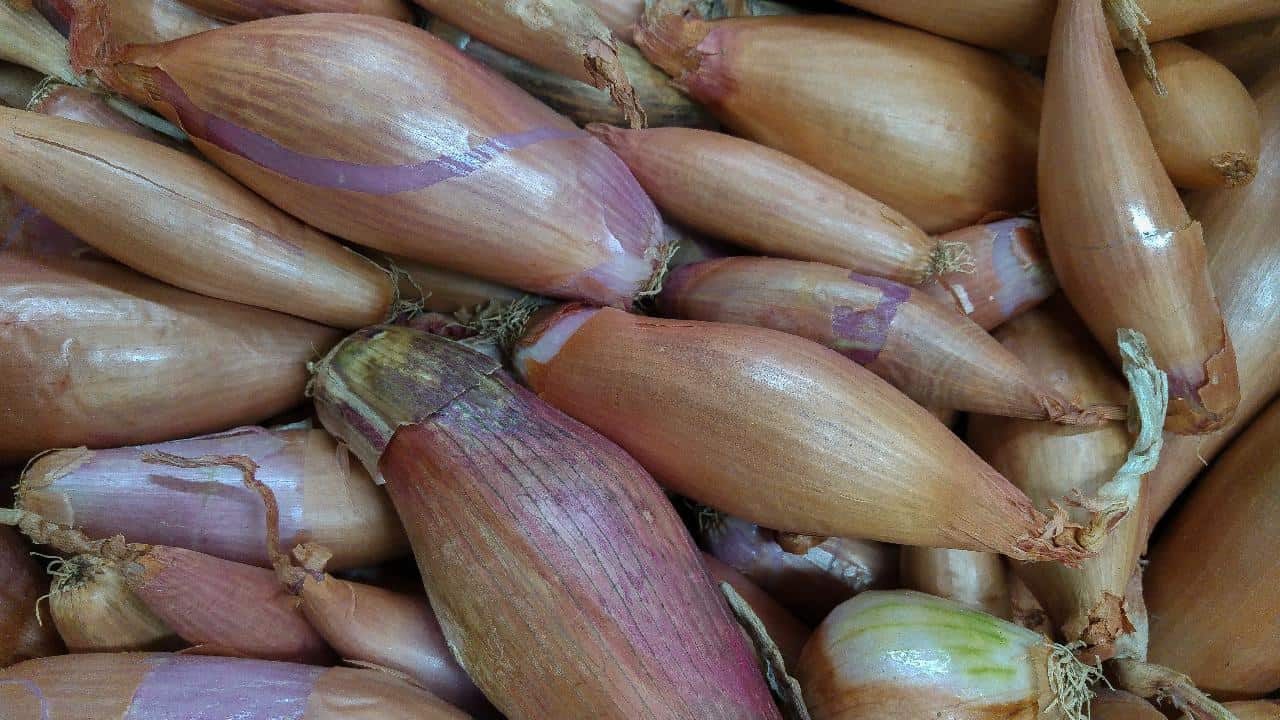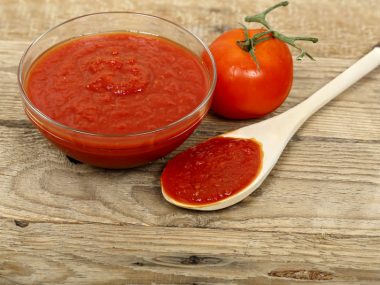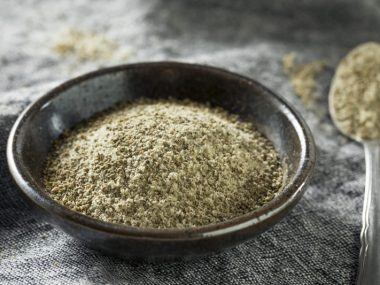I love garlic powder. It’s made from grounded dehydrated garlic and makes a great substitute for fresh garlic. Meaning, if you need to use dried or fresh garlic in some recipe, use powder garlic instead.
However, keep in mind that garlic powder has a more concentrated and intense flavor. If you’re using garlic powder for the first time, start with small amounts and determine what works best for your taste.
Sometimes people confuse garlic salt with garlic powder, but they’re wrong. Garlic powder is only pure garlic without any salt added. It’s used in marinades, salad dressings, soups, sauces, or rubs.
My favorite use of garlic powder is on my hamburgers, pork chops, and pan-fried meats like chicken or ground beef mixture for tacos. My mouth is watering just thinking about these meals.
And it’s true. Sometimes you can’t beat fresh garlic. However, garlic powder works just fine for me. And when I run out of garlic powder, I use the following substitutes instead.
Garlic Powder Substitutes
The way to make garlic powder is from garlic that has been dried and grounded. Garlic powder isn’t as potent as the fresh one.
However, it’s easier to work with and also has a longer shelf life. Even if you don’t cook every day, garlic powder should be present in your spice cabinet. If for some reason, you’re out of garlic powder, use some of the following alternatives instead.
1. Granulated garlic
Granulated garlic is the nearest garlic powder substitute that you can use in your pasta for a mouth-watering aroma. For the best flavor use 2 teaspoons of granulated garlic in place of 1 tablespoon of garlic powder.
2. Fresh garlic
Fresh crushed or chopped garlic is a great substitute for garlic powder in sauteing. For every 1/8 teaspoon of garlic powder use 1 clove of fresh garlic and you will get delicious results.
3. Minced garlic
Minced garlic is mainly used in recipes where sautering is required. It’s finely chopped garlic that resembles the flavor of garlic powder. For 1 teaspoon of garlic powder, use 1/2 teaspoon of minced garlic.
Also Read: Garlic Powder Vs Minced Garlic
4. Garlic puree
This puree can be used as a substitute for garlic powder for dishes like pasta or mayonnaise sandwiches. It mixes well with sauces and creams and gives the same specific flavor as garlic powder. For 1 teaspoon garlic powder, use 1/4 teaspoon garlic puree.
5. Garlic salt
Garlic salt is basically a combo of garlic powder and salt. The ratio of garlic powder and salt in garlic salt is 1:3, so use 4 teaspoons of garlic salt in place of 1 teaspoon of garlic powder. You should lessen the salt substance as garlic salt will give your recipe a pungent flavor as well.
6. Garlic juice
Garlic juice is an incredible substitute for garlic powder as it’s sharper and can advance the smell of your recipe. In place of 1 teaspoon garlic powder, use 1/2 teaspoon of garlic juice.
7. Garlic flakes
Dried garlic flakes are another good substitute when you’re out of garlic powder for your recipe. In place of 1/4 teaspoon garlic powder, use 1 teaspoon garlic flakes for a genuinely comparable taste.
8. Onion powder
It’s not the perfect substitute but onion powder can replace garlic powder in some recipes. Thus, utilize half the amount of garlic powder instead of onion powder. Usually, they’re both used as a combo in recipes.
9. Asafoetida powder
This powder is utilized with vegetables and dried beans. In India, they use it as an alternative to garlic and onions which are harsher on the digestive system.
1/2 teaspoon of Asafoetida powder can be subbed for 2 minced garlic cloves. Or 2/3 of a cup of minced onion. Small amounts can provide a gentle lift to salad dressings, cheese dishes, eggs, and fish.
At your dinner party, if you’re not sure about your guests consuming garlic or onions you can utilize this powder. It will prevent the recognizable garlicky breath that everyone despises.
10. Shallots or onions
Shallots are the roots of a crop that is small and round. And it’s very similar to onions. They’re often utilized for flavoring food because of their strong taste and smell.
Onions, on the other hand, can be grilled, roasted, chopped, caramelized, battered, deep-fried, and used raw in salads, dips, sandwiches, or as a decoration for tacos. As you can notice, they’re super-versatile and super-adaptable. You can add onions to almost any dish.
Related Questions
Can you substitute garlic for garlic powder?
Actually, garlic powder is a dried, grounded fresh ground bulb, so yes, you can substitute garlic for garlic powder. You can likewise hear it referred to as “granulated garlic”. Granulated garlic is very similar to garlic powder. It’s just granulated. Utilize a single medium-sized fresh garlic clove for each 1/8 teaspoon required.
Can you substitute minced garlic for garlic powder?
If you don’t have garlic powder, you can utilize minced garlic instead and vice versa. Utilize the same amounts of freshly minced garlic in your recipe that asks for garlic powder.
Can I substitute onion powder for garlic powder?
Alongside garlic, onions are a part of the allium family. Therefore, they have similar benefits and flavors, so yes, you can substitute onion powder for garlic powder. You can use both powders on their own or combined to give your dish a tastier kick.
Is garlic powder the same as minced?
No, minced garlic has a stronger flavor and smell because it’s fresh. Regardless of whether you purchase full garlic bulbs and mince them yourself, or purchase pre-minced ones in a container, the taste and smell will be better than that of garlic powder.
How do you make homemade garlic powder?
To make homemade garlic powder at home, you need one ingredient only. Yep, you guessed it. You only need garlic. Just divide the bulbs into separate cloves and take off the skin.
You can use as many bulbs of garlic as you want. The good thing about garlic powder is that it stores well and makes a perfect gift for friends and family if you accidentally make too much.
Start by slicing the peeled cloves into small pieces. Put them in a food dehydrator in one layer. You can also utilize the over. Just put the garlic on a sheet and set the temperature at 150 F. The garlic will dry. Once it’s done, let it cool down.
Then use a spice grinder, coffee grinder, pestle, and mortar, or a food processor to grind it until it gets the preferred consistency. Store the garlic powder in a spice container or a glass jar, and put it in a dry, cool place.
If you’re utilizing an old jar, make sure to wash it well. Also, don’t forget to dry it fully. Then, put a label on the jar with the name of the spice along with the date.
Please, shake the jar or container daily for the first 14 days or so, after you’ve created it to make sure that the moisture is evenly transferred through the garlic powder. Shaking will also prevent mold.
The best part about both store-bought and homemade garlic powder is that it has a long shelf-life. Meaning, if prepared properly, it will last for years.
The Takeaway
Garlic powder is one of the most popular spices in the world. And when stored the right way, it can last for years. Some people like garlic while others despise it.
I’m team garlic because it’s unique and has an intense flavor that can add a kick to every meal. You can add garlic powder in pasta, salads, grilled chicken, pizza, and more.
If you’re allergic to garlic powder, you can use ginger or cumin instead. However, if you’re just out of garlic powder, use some of the alternatives I’ve mentioned above.
If you’re new to garlic powder or any of its substitutes, start with a small amount and work up until you’re satisfied with the results.
What’s your opinion on garlic powder? Share your cooking tips and tricks in the comments. Let’s chat and exchange experiences.
